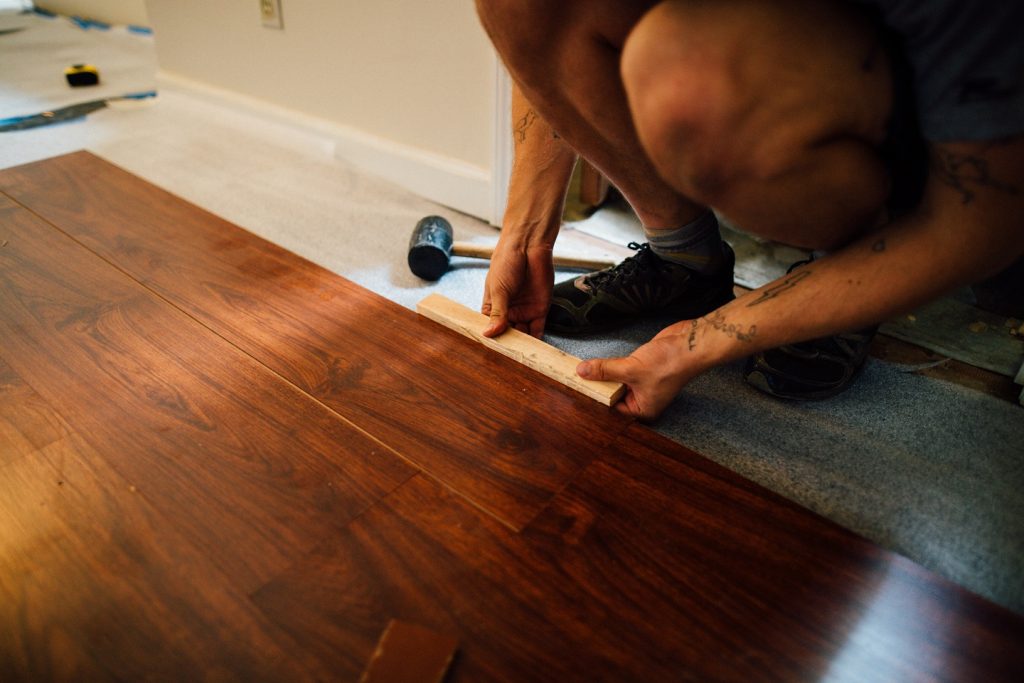If the thought of playing on the floor with your children, or even stepping into the bathroom in the middle of the night, is wholly unappealing to you, simply because you cannot bear the cold temperature of the floors, an underfloor heating system may be the perfect fit for you.
But what exactly is underfloor heating? And how does it work? We have all the answers.
What is underfloor heating?
As the name suggests, underfloor heating (or UFH), is a heating system that lies directly beneath your tiles or floor. It effectively replaces the traditional radiators and can heat individual rooms, or even act as a primary source of heat for your home.

What are the different types of underfloor heating?
Underfloor heating is of two main types, namely:
- Hydronic (Wet) Underfloor Heating
- Electric Underfloor Heating
A hydronic underfloor heating system consists of a series of pipes which are filled with hot water and powered by a pump. This is typically installed into the floor screed.
Electric underfloor heating, on the other hand, comprises of an electric cable system. These are cheaper and easier to install, but more expensive to run due to the high cost of electricity.
The type of UFH you choose may ultimately depend on the area of the house, the timeline allocated and expected running costs.
For instance, an electric underfloor heating system for a small area such as a bathroom, that need not be continuously heated throughout the day, is a smart idea. Whereas, rooms that tend to be occupied for most of the day (like living rooms and conservatories), would benefit from wet underfloor heating, simply due to the cheaper associated running costs.

How do you install underfloor heating?
While underfloor heating systems are often thought to be restricted to new builds, this is definitely not the case. They can be installed during extensions and renovations of existing homes too. However, certain additional measures must be taken to ensure a smooth installation.
The installation process generally involves:
- Taking up the floors
- Cleaning the subfloor
- Laying the insulation
- Installing the manifold
- Preparing and pouring the screed
- Allowing the screed to dry (may take up to 4 weeks)
For a home renovation, the installation of UFH could mean a change in the level of the floors; which in turn could cause issues with the joinery (such as in the closing of doors, and even in the skirting).
Therefore, careful consideration of the cost, schedule, and disruption involved needs to be done before undertaking this process.

How much does underfloor heating cost?
The initial cost of installing wet underfloor heating could range from £30 to £80 per m2. The cost varies depending on the property, and also on whether it is a new build, renovation, extension, or conversion.
However, wet underfloor heating systems are estimated to be 40% cheaper to run when compared to radiators; making them well worth the investment.

How do you maintain your underfloor heating system?
Fortunately, the maintenance and servicing of underfloor heating systems is comparatively easy.
The system basically requires an annual check-up and service to ensure it is in good working order, and to identify any faults before they cause damage. Some of the things that need to be looked into include:
- Removal of excess air trapped in the system
- Flushing the system to replace the fluid with fresh water
- Checking the system pressure
- Checking the thermostat programming
All of this ensures its smooth functioning and optimal efficiency.

Which floors are best suited for underfloor heating?
Contrary to popular belief, underfloor heating is not limited to stone and tile floors. In fact, these heating systems are compatible with concrete, engineered wood, laminate, vinyl, and even carpet flooring.
What are the benefits of underfloor heating?
There is a reason why underfloor heating is so popular among homeowners; actually, several reasons. Here are a few of them:
- It is effective and energy efficient
- There is an even distribution of heat throughout the room with no cold spots
- The running costs are significantly lowered when using wet underfloor heating, especially when compared to radiators
- It works well with renewable technology such as low-flow heat pumps and lower maintenance costs
- The system enables you to have different zones or areas of heating that can be controlled independently, thereby minimising energy wastage
- The system can be tailored to suit your requirements. This includes the type of flooring used, as well as the room in which it is installed.
- It eliminates the need for radiators, which take up floor space, and are a potential hazard for those with young children
- Underfloor heating systems are long-lasting, with a life span of about 50 years

Conclusion
There is no denying the luxury of stepping onto heated floors. Add to that the money and energy-saving attributes of underfloor heating, and it just makes sense.
And while a few may remain hesitant, the long-term benefits and comfort offered by underfloor heating far outweigh any initial cost or installation work involved. In fact, with the right expert help and guidance, underfloor heating simply becomes one step in a journey towards realising your ultimate family home.
At Good Design and Build we pride ourselves in offering you a complete solution, from design to build. See our recently completed projects, get inspired, and start your dream home journey with us today!




